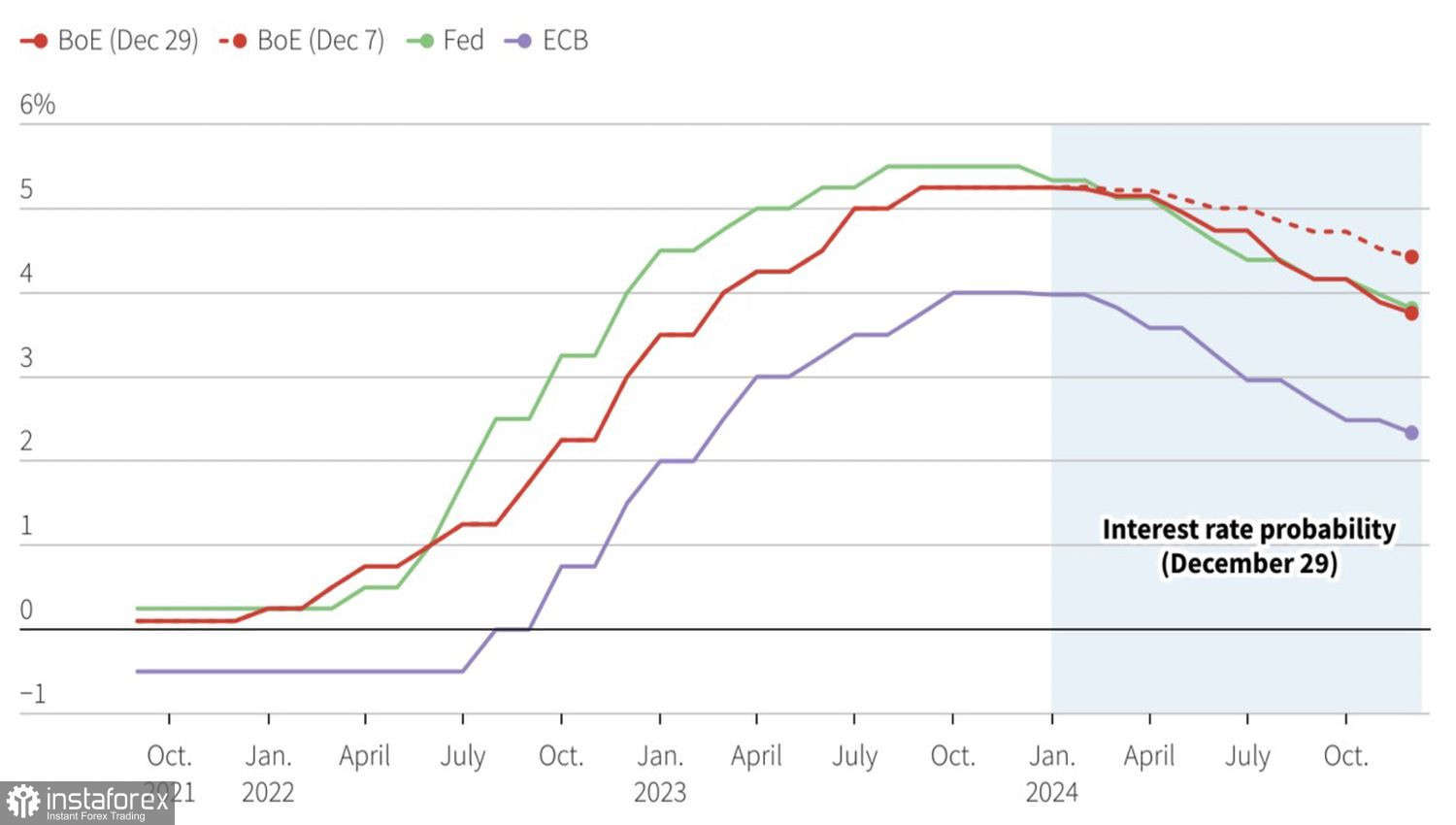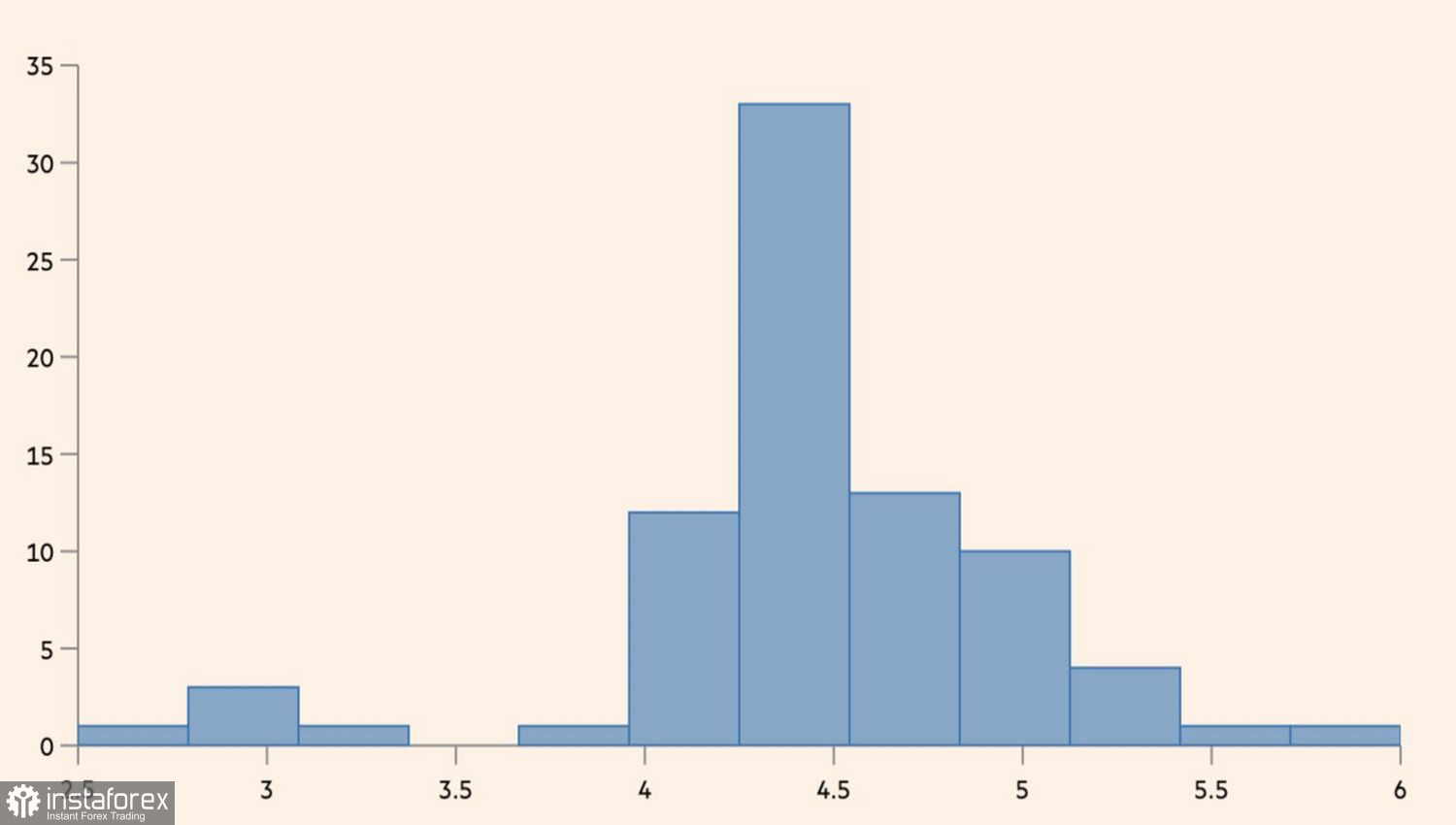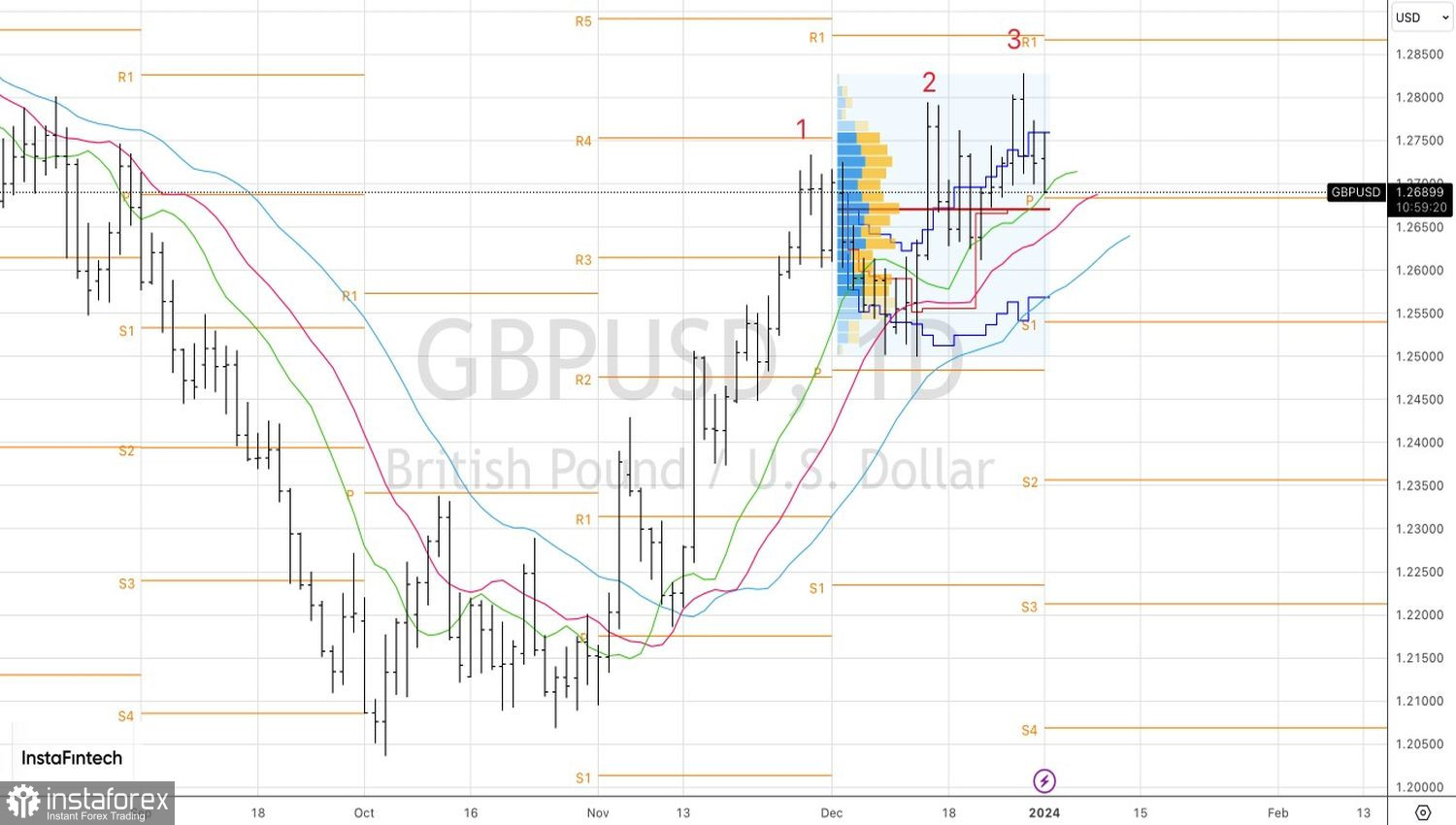At the end of 2023, the British pound took second place among the major currencies on Forex, following the Swiss franc. It strengthened against the U.S. dollar by almost 6%, marking the best performance of GBP/USD since 2017. The stronger-than-expected economy of the UK in 2022, its inflation not falling as quickly as in the eurozone and the U.S., the Bank of England's sluggishness, and investors fleeing from the U.S. dollar contributed to the successes of the "cable." However, these successes may be difficult to repeat in 2024.
It is believed that the GBP/USD rally in October-December was based on a convergence in monetary policy. Although the markets expect both Washington and London to lower key interest rates in the coming year, the Fed is likely to do so faster and more aggressively. This is due to the more persistent inflation in Britain, which makes the Bank of England reluctant to make a dovish pivot.
However, the slowdown of consumer prices to 3.9% in November deprived the sterling of an important trump card. After this, derivatives signal a 150 basis points cut in the repo rate in 2024. This is a serious cut, similar to that for the federal funds rate. However, investors believe the Federal Reserve will make the first move.
Dynamics of Market Expectations for Central Bank Rates

HSBC believes that the GBP/USD rally in terms of rates was completely unjustified. In reality, the sterling benefited from the global appetite for risk. Its growth on expectations of monetary stimulus from the Fed triggered a rapid upward march of U.S. stock indices and significantly weakened the U.S. dollar as a safe-haven asset. The correction of the S&P 500, due to the realization that expectations of a federal funds rate cut at 6 FOMC meetings in 2024 are overly optimistic, triggered a pullback in GBP/USD.
An additional bearish driver for the pound could be the weakness of the UK economy. It unexpectedly shrank in the third quarter. The UK is considered the second 'sick man' of Europe after Germany. It may be already in recession, which could force the Bank of England to cut rates sooner than the Fed. However, Financial Times experts are not so bloodthirsty. They believe the repo rate will drop from 5.25% to 4.5%, i.e., by 75 basis points, not the 150 basis points desired by financial markets.
Economists' Forecasts for the Repo Rate


Thus, the most likely scenario for the analyzed pair seems to be a pullback. Its medium-term prospects will depend on the state of the economies of the U.S. and Britain, the dynamics of stock indices, and monetary policy.
Technically, on the GBP/USD daily chart, a Three Indians reversal pattern has formed. At the same time, a confident assault on the pivot level at 1.2685 and the fair value at 1.267 are strong arguments in favor of forming short positions for the pound against the U.S. dollar. A correction towards 1.261 and 1.254 seems likely.





















